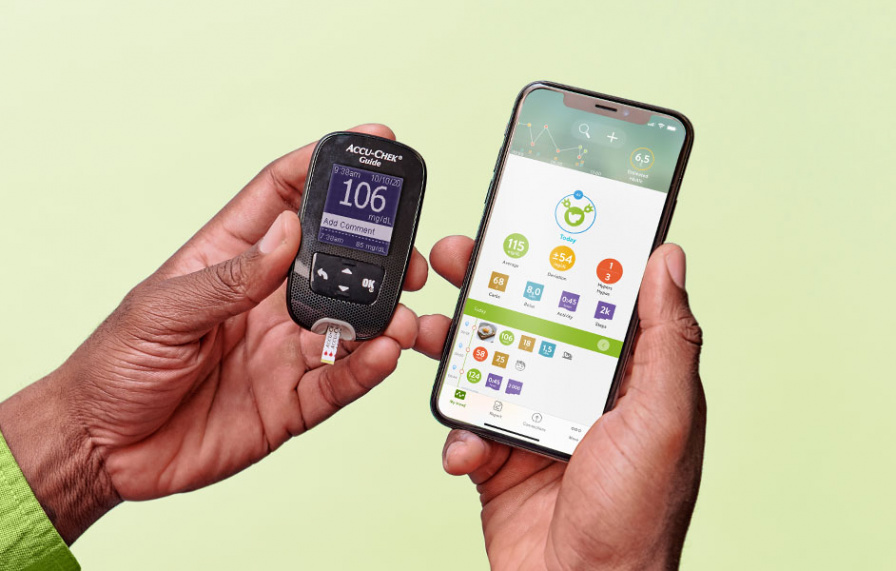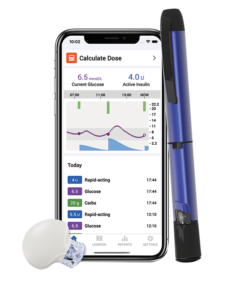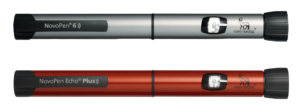Diabetes technology
In this time where AI is becoming more and more mainstream, you will not be surprised that there is also a range of technology that can help you manage your diabetes. They include:
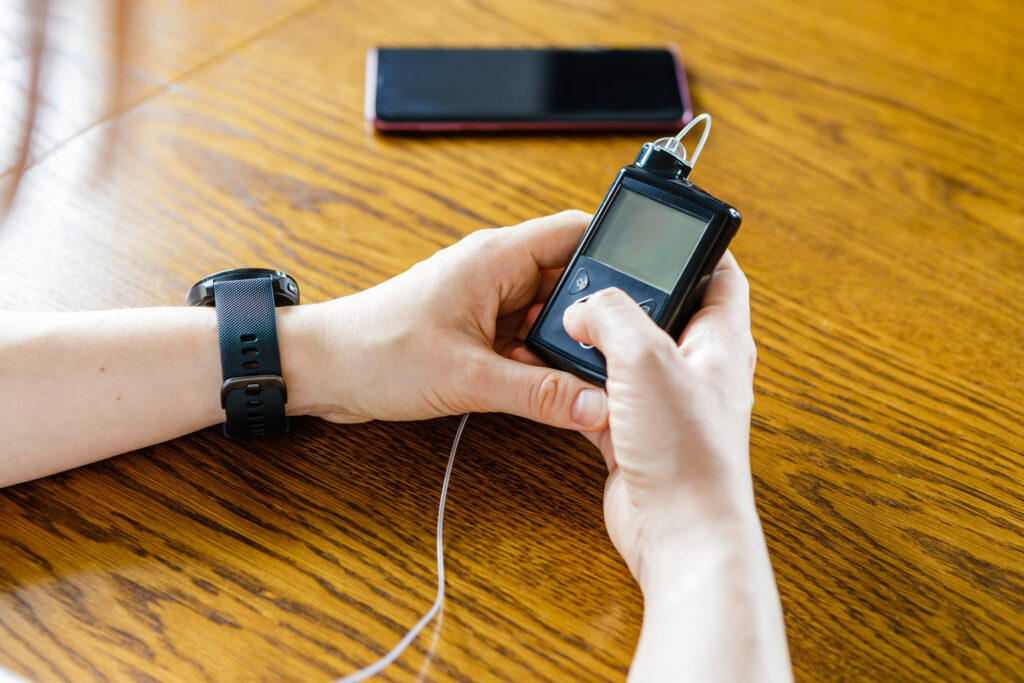
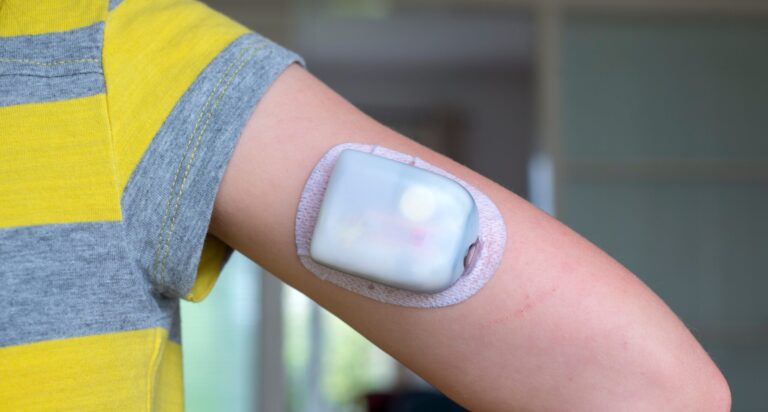
Insulin pumps
Scroll down, or click on the images above, to find more about each of these topics.
Diabetes Management Apps
There are a variety of apps available for both Apple and Android smart phones.
We suggest you use apps that are associated to the meter you are using or that you look for apps that have been TGA approved. TGA approved apps have been tested for the Australian market and if there are issues with the app the TGA will issue a warning, a product recall or a product defect correction.
Insulin injection devices (pens)
There are a range of different injection devices, more commonly referred to as insulin pens, available. Whether you use a disposable or reusable device is mostly your choice.
Each company that produces reusable pen devices and injectable diabetes medication has their own devices that are to be used with that company’s medications. Using insulin from one company in another company’s device will lead to inaccurate dosing. This can cause hypo- or hyperglycaemia.
Reusable insulin pen devices currently available in Australia include:
Disposable insulin pen devices available in Australia are:
There are a few insulin pens that can help you in remembering when you last took an injection and how much you had, so-called Smart Pens. For example, Novo Nordisk has their Novopen-6 or Novopen Echo. Medtronic has the InPen. To find out more about these devices, either check out their websites through the links provided, or come back to this page later to read more here.
Flash or Continuous Glucose Monitoring
Continuous Glucose Monitoring (or CGM for short) is an advanced way for people living with diabetes (both type 1 and type 2 diabetes and even gestational diabetes in some cases) to monitor glucose levels in real-time, over a period of time.
CGM usually consists of 3 parts:
A. Sensor
B. Transmitter
C. Receiver
A sensor is a small, plastic device with a small electrode which gets injected under the skin, on the stomach or the arm. Most current sensors can stay in place for six or more days. The insertion takes no more than a few minutes and is essentially painless. The electrode under the skin is constantly in contact with the interstitial fluid in the body and that is how it collects blood glucose data.
A transmitter is a device that clips onto the sensor (which is now connected on the body). The blood glucose data from the sensor is conveyed to the transmitter, which in turn transmits the data through Bluetooth to the connected receiver where you can see it in real time. The transmitter and the receiver need to remain within 20 feet (6m) of each other so that data can be relayed without a break.
A receiver, which can be a standalone handheld device, an app on your smart phone or an insulin pump, will automatically receive glucose levels every 5 minutes allowing you to do less finger pricks. CGM can be used with or without an insulin pump.
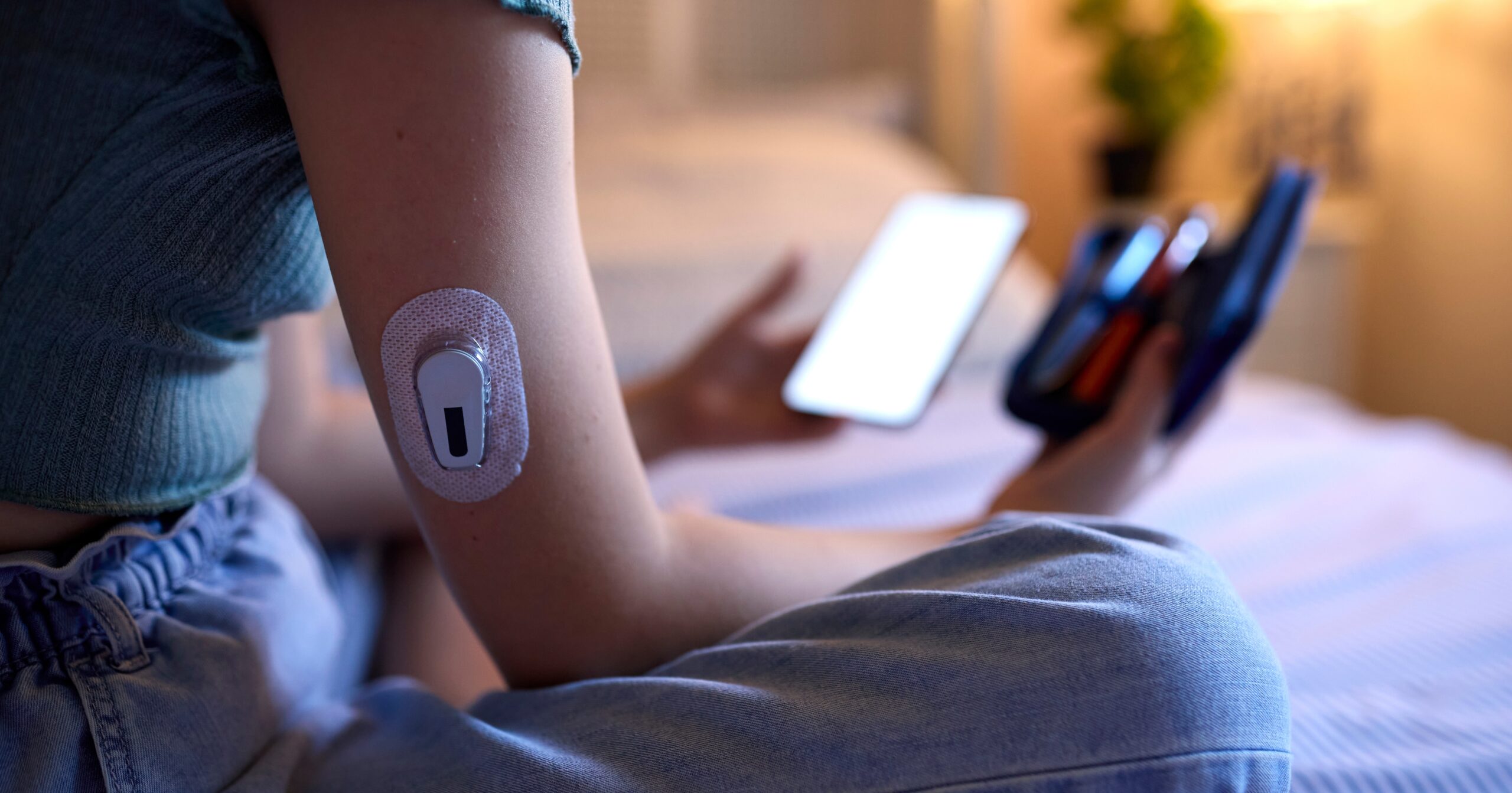
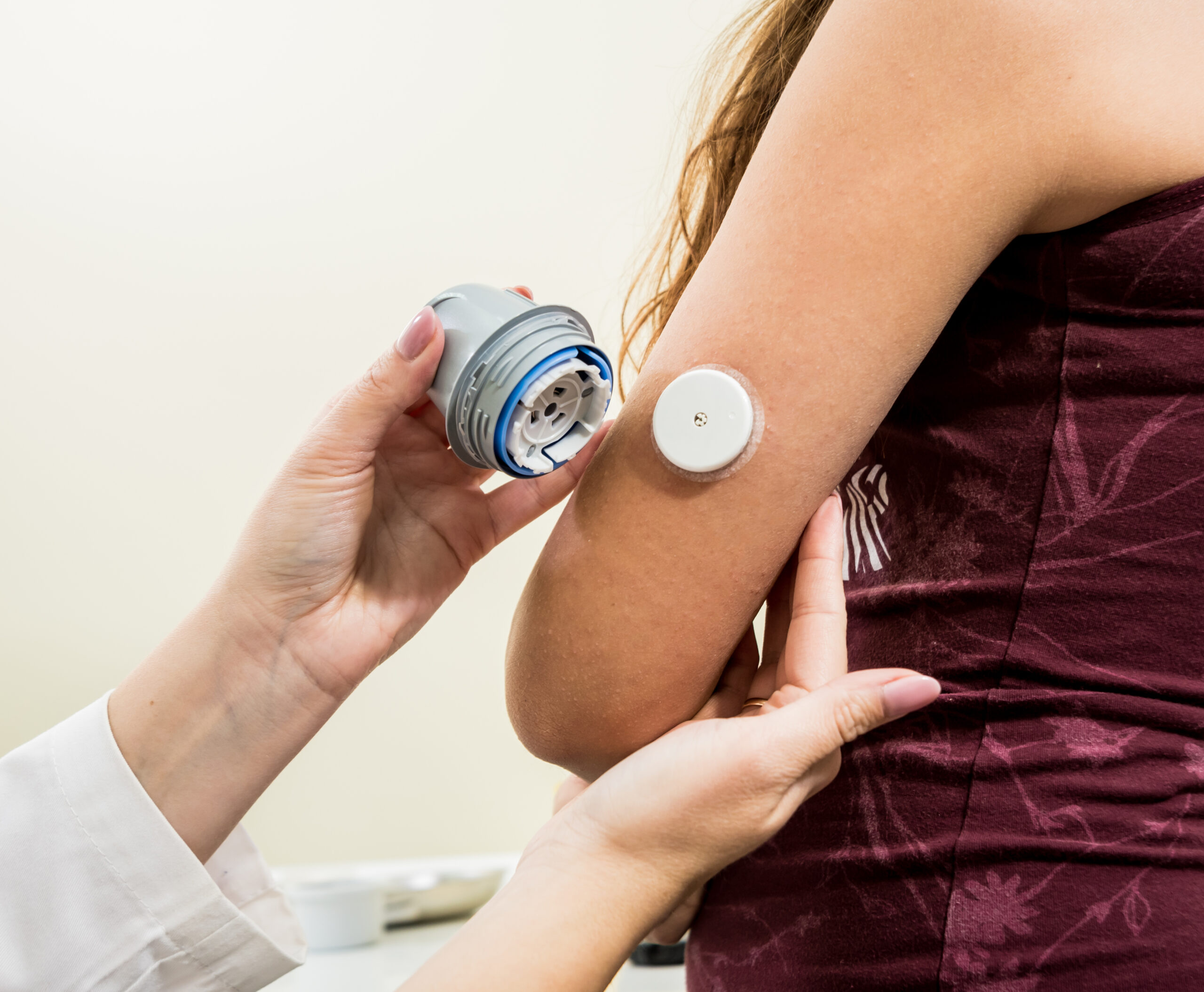
Flash Glucose Monitoring, is similar to CGM, except that you used to have to actively obtain the data from the sensor by scanning it with your reader. Also, Flash GM devices only consist of 2 parts; the sensor and the receiver.
Advantages of CGM
The biggest advantage of CGM devices is that they provide information on what is happening to your blood glucose level every few minutes, in real time.
The newest devices display glucose readings on a screen so you can see whether your glucose levels are rising or falling through the use of the Trend Arrows. Some devices are able to display graphs revealing glucose levels collected over a certain number of hours on its display screen. The data collected on all devices can be uploaded to a computer for graphing and further trend analysis.
24/7 readings
CGM allows you to see glucose levels across the day and night, rather than just at a single point in time. You will be amazed to see the variability of your BGLs as CGM graphs can show patterns that may help you identify how factors, such as food and physical activity, affect your glucose levels.
Trend arrows
The Trend Arrows show you if your glucose levels are stable, rising or falling and how quickly they are changing.
Alarms
Some CGM devices can be set up to sound an alarm if your glucose levels are rising too high or if you are at risk of hypoglycaemia (a hypo, or low glucose levels). This allows you to act before glucose levels rise too high or drop too low. Alarms can be especially useful if you cannot always tell when you are having a hypo (if you have hypo unawareness) and is especially important for young children, who may not be able to detect their lows reliably, or may not be able to communicate their lows to parents or carers.
Overnight monitoring
CGM devices measure glucose levels throughout the day AND night without you having to wake to do finger prick blood glucose checks. For starters, this simplifies the middle-of-the-night glucose check routines for parents who do so – now instead of getting up to do a finger prick BGL, parents can keep a receiver on their night-stand, or can remotely view the CGM data on their smartphone… one peek at the display lets you know if further action is needed. If not, you can simply close your eyes and go back to sleep. Depending on when you start a new sensor, calibrations may sometimes be needed overnight; but advice from a health professional on how to time them can help avoid this.
Reduced need for finger prick checks
CGM does not completely replace the need to do finger prick checks, but it does reduce the number of finger pricks needed. If you use CGM you should to speak with your health professional about when and how often you should do finger prick checks.
Peace of Mind
Being able to see your glucose levels at any time and receiving alerts if your glucose levels go outside your target range can provide peace of mind and reduce fear of hypos.
Data sharing
Some CGM devices let you share glucose readings with others via an app on their smart device or notify them of alerts and alarms via SMS messages. This can be particularly useful for parents or carers, as with remote-viewing the data can be picked up and viewed from any other (connected) location in the world! Data can also be shared with your diabetes health care team.
Insulin pump integration to prevent hypos
Some CGM devices work with a compatible insulin pump and can temporarily stop insulin delivery from the pump if glucose levels drop below your target range (or if the sensor predicts that the glucose level will soon become too low). This may help prevent hypos or make them easier to correct. Some CGM/pump combinations can also adjust the basal rates (the background insulin) upwards, to deal with higher BGLs. And, CGM can help you to understand your diabetes better, give you more confidence in managing your diabetes and can help achieve tangible results. However, just slapping on a CGM will not manage your diabetes…
Disadvantages of CGM
Despite all the benefits of CGM, a given piece of diabetes technology is not necessarily a good fit for everyone, and CGM is no exception.
As with all technology, it has its drawbacks and there are reasons why some individuals with diabetes may choose not to add this tool, or may choose to add it intermittently to their diabetes tool kit. Even for those people for whom the benefits outweigh the drawbacks, there are important considerations to keep in mind as you use CGM, in order to stay safe and healthy.
Tech burden
Some CGM users report feeling that CGM is one more device to wear, one more thing to learn, one more set of alarms to attend to and sensor changes to remember. You will have to assess for yourself whether the burden of diabetes that is lifted by using CGM outweighs the burden of the extra tech piece.
Data overload
Continuous monitoring produces lots of data. I mean, LOTS of data. Sometimes it feels like too many numbers to know what to with them. Most CDEs, like myself, suggest spending the first week on CGM just watching the output without making changes; look at broad trends rather than dwelling on specific numbers; and to avoid the temptation to peek at the display too often.
Being connected to your device 24/7
Having the CGM sensor attached to your body all the time can be annoying, even though it is not very big and most of the time other people don’t really notice it, but it can leave suntan marks and some people can get skin irritation from the tape.
Over reliance
It may prove useful for some people to take breaks occasionally, particularly if you tend to rely on the readings and recommendations a bit too heavily.
Alarm fatigue
Those same alarms that are so valuable when they catch an undetected low are equally frustrating when they go off for a false low. Especially in the middle of the night. And there is nothing more maddening than 2 hours of a display that reads only “???”. Small children and those with a lean body type may be more prone to sensor mix-ups, since sensors read glucose best when bathed in interstitial fluid, not bumping up against muscle.
Interesting conversations
Wearing it on the upper arm can lead to some interesting conversations with people who are curious. Personally, I see it as an opportunity to educate and advocate, but if it would bother you, you could wear a long-sleeved shirt to cover the sensor or there are plenty of other areas to place the sensor where it is less visible, like the abdomen or your buttocks.
CGM is not fail-proof
CGM is not fail-proof – so it is unwise to “set it and forget it.” There can be periods when the system is “down” or the reading is not accurate.
Still need some finger pricks
CGM doesn’t entirely replace finger prick blood glucose checks. Most current CGM systems require a finger prick BGL to confirm the CGM reading before dosing insulin or treating a low. Although some systems do NOT require finger prick checks for calibration and may be approved for insulin dosing and treating lows without a finger prick, finger prick BGLs are still needed for all systems when your symptoms don’t match the CGM readings.
Lag time
There is a lag time of about 6-12 minutes between the interstitial cell fluid and the blood, which can be greater when glucose levels are rising or falling rapidly.
A good way to explain this is through the following analogy: Think of blood glucose (BG) and sensor glucose (SG) as the cars on a roller coaster. Imagine the bumps and hills on the roller coast are like the changes in your glucose levels throughout a typical day. As carbohydrates are broken down glucose will enter the blood stream first and hence BG is in the front of the roller coaster. Since blood travels from the blood stream into the interstitial fluid SG follows BG and hence is in the back.
Now think of going up the roller coaster as a rise or upward trend in glucose levels. As the train goes up the hill the BG will lead the SG. As the train goes down the hill the BG will drop before the SG does.
There is a greater difference when the glucose is changing more rapidly, for example after a meal, after an insulin injection or after physical activity. So, expect to see a difference between BG and SG – the two numbers will rarely be exactly the same and this is okay. With CGM the focus is not on the actual number, but on the trends. Knowing the speed and direction of glucose movement is much more useful than individual values.
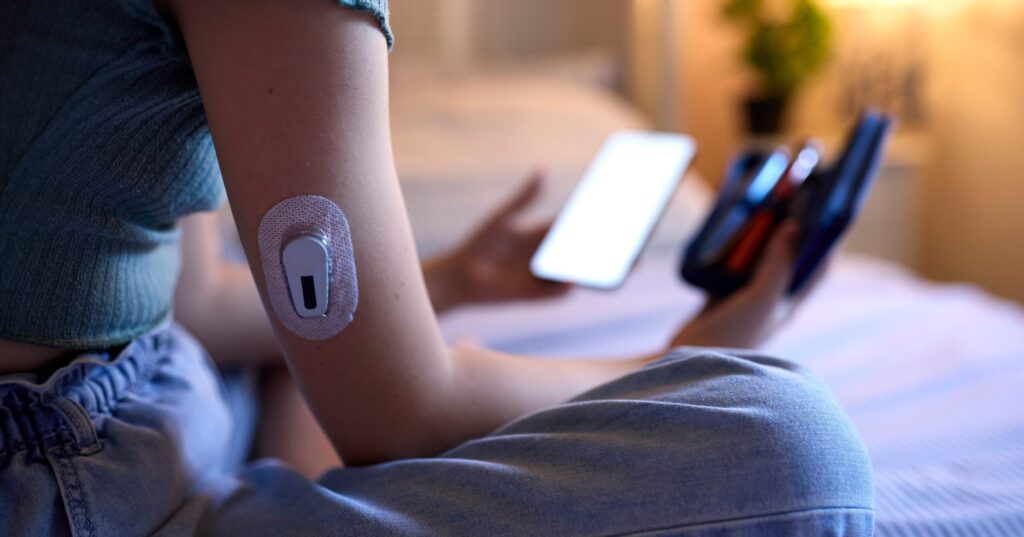
While using CGM, it is important to continue all the other “best practices” that keep you safe and healthy.
Symptoms of high and low glucose should not be ignored just because the CGM reading tells you that the glucose is in range. Do regular finger prick BGLs if your sensor glucose readings do not fit with your symptoms, and to calibrate the sensor. If you have reason to be concerned about a night-time low, still set an alarm to check that night, even if it is just to check that the CGM is still operational and the reading is in-range.
So, if you want to wear a CGM so you never have to poke your finger again, you’ll be disappointed. (Although use of a CGM can greatly reduce the number of pokes needed in a day.)
To access subsidised CGM through the National Diabetes Services Scheme (NDSS) complete this form or ask your endocrinologist or credentialled diabetes educator (CDE) to apply for you through the NDSS HP Portal.

